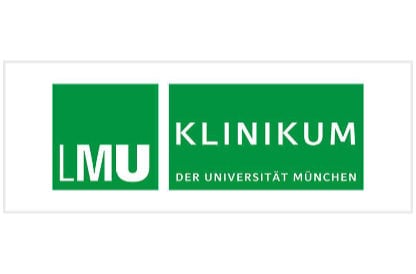 University Hospital of Munich (LMU)
University Hospital of Munich (LMU)
OpenText™ Vibe™ delivers effective and secure team collaboration with full mobile support for ease-of-use

Products and services

Outcomes
- Full protection of patient data
- Secure and effective team collaboration
- High Vibe user acceptance when team members realize potential
- Vibe is the de-facto project management solution
Challenge
Enable medical professionals to freely communicate and collaborate with other medical institutions, in Germany, or elsewhere in the world. This needs to be achieved without compromising security and ensuring the privacy of patient data.
As patient data is held by the MIT department, security and data protection are extremely important. However, in an increasingly globalized world, it is vital that medical professionals can freely communicate and collaborate with other medical institutions in Germany, or elsewhere in the world. Since this type of collaboration often involved the exchange of data, it created compliance and privacy issues because security could be potentially compromised.
Jürgen Primbs, Project Manager for the hospital, explains the dilemma: “We used SharePoint for our intranet, but this didn’t provide the opportunity to securely collaborate with external audiences. We were relying on a system of just telling people what they could and could not share. Patient data could obviously not be shared but working documents in a team environment could. We decided we needed more structure to allow for much better team collaboration.”
It is almost impossible now to imagine life without Vibe and code and concept to support us. We have strict workflow processes which ensures no patient data is shared externally and we have seen the use of Vibe increase dramatically over the last four years.
Details
The department of Medical Technology and IT (MIT) is responsible for supporting the information technology infrastructure. Safeguarding the infrastructure operation, as well as information processing for healthcare, research, and teaching purposes, reflects its core business.
Solution
Vibe was used elsewhere in the University Hospital and was recommended to Mr. Primbs by a colleague who had evaluated other collaboration solutions. Vibe is designed to bring people, projects, and processes together in one secure place to enhance team productivity. Within two months, the MIT team was live with Vibe. “It was crucial for us that we could use Vibe out-of-the-box and that it would give us the platform support, in particular mobile, that we required. We liked that we didn’t need any programming knowledge and the set-up was a simple click-and-go process. Following implementation we were operational straightaway and Vibe soon became a key part of life for us,” Mr. Primbs notes.
Local implementation partner code and concept trained the IT team on making the most optimum use of Vibe; implementing workflows and complex use cases, and providing Vibe project management workshops. code and concept also ensures Vibe remains current and is maintained in the context of the entire IT infrastructure.
Vibe’s 1,200 users particularly like its mobile capabilities, with a lightweight, secure, and easy-to-use mobile user interface that presents a specialized view of Vibe workspaces. It includes a starting home page with quick links to the most commonly used aspects, such as workspaces, favorites, micro-blogs, and teams. Mr Primbs says: “It is interesting to watch the Vibe user adoption. Typically, at the start of a project, the team will use Vibe to share working documents. Soon they start to realize the potential, and before we know it, Vibe is used for blogs, wikis, and discussion forums, all promoting more effective team collaboration.”
Data and documents are ubiquitously available so if employees attend a conference, there is no need to bring a USB stick. The data can be accessed from anywhere using a standard web data connection, regardless of location. This prevents version control issues and makes for a much more productive working environment, as Mr Primbs comments: “If any questions come up during a presentation, I just access my work files and deal with them directly.”
Occasional Vibe users like the clarity and simplicity of the landing pages, making it easy to create management reports. Landing pages are designed so that internal teams and communities can have a one-stop place to communicate within teams.
Results
Vibe has not been introduced just as a communication and collaboration platform, but it is also used for hospital project management. The global project office manages over 60 projects led by different teams throughout the university group. Everything is captured in Vibe to ensure practical support.
Mr Primbs concludes: “It is almost impossible now to imagine life without Vibe and code and concept to support us. We have strict workflow processes which ensures no patient data is shared externally and we have seen the use of Vibe increase dramatically over the last four years. From a tool which was mainly used to share work documents, we have evolved to creating a much more productive user community who have embraced all that Vibe has to offer to improve collaboration.”
We liked that we didn’t need any programming knowledge and the set-up was a simple click-and go process. Following implementation we were operational straightaway and Vibe soon became a key part of life for us.
About University Hospital of Munich (LMU)

The University Hospital of Munich is a center of high-end medicine, medical innovation and research. It is a highly advanced hospital with 47 clinics, institutes and departments covering all fields of medicine with its 10,000 employees.